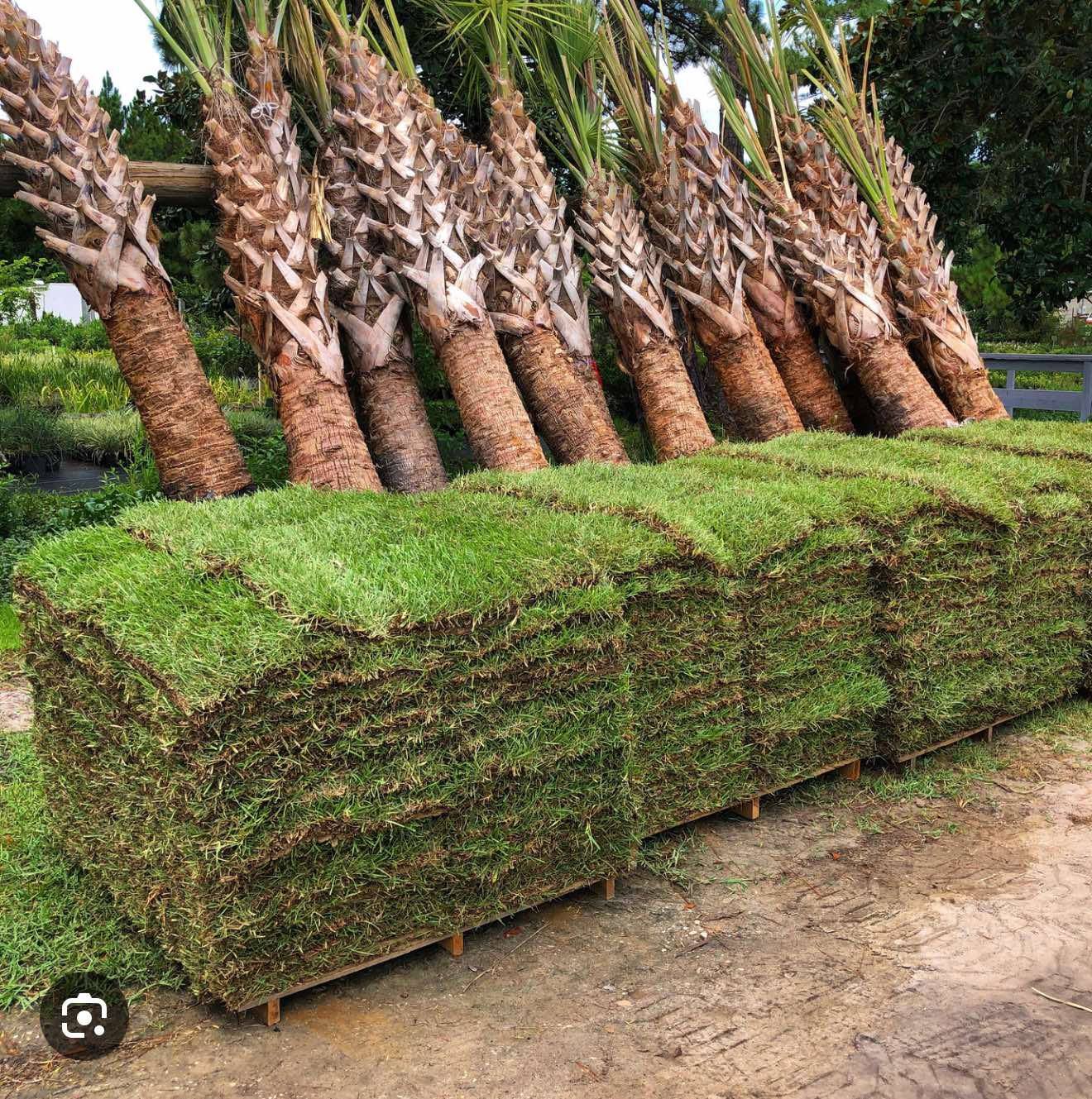 Image 1 of
Image 1 of


CENTIPEDE
Showcase what this product is about. What’s it made of? How was it made? What are ways to enjoy
Simplified Facts About Centipede Sod
Overview
Common Name: Centipede Grass
Scientific Name: Eremochloa ophiuroides
Type: Warm-season grass
Characteristics
Color: Light to medium green
Growth Habit: Spreading, low-growing
Texture: Medium texture, dense feel
Climate Adaptability
Ideal Regions: Southern United States
Temperature Tolerance: Thrives in warm climates, tolerates drought
Maintenance Requirements
Watering: Requires less water compared to other grasses; drought-tolerant
Mowing Height: Best maintained at 1 to 2 inches
Fertilization: Low nutrient requirements; minimal fertilization needed
Benefits
Low Maintenance: Ideal for homeowners seeking easy-care lawns
Pest Resistance: Naturally resistant to several common lawn pests
Soil Adaptability: Adapts to a variety of soil types but prefers sandy or acidic soils
Drawbacks
Cold Sensitivity: Not suitable for cooler climates; susceptible to frost
Slow Establishment: Takes longer to establish compared to other grass types
Uses
Lawns: Popular for residential lawns in warm regions
Public Parks: Commonly used in parks where low maintenance is preferred
Centipede sod is an excellent choice for those looking for a resilient, low-maintenance lawn option, especially in warmer climates.
it?
Showcase what this product is about. What’s it made of? How was it made? What are ways to enjoy
Simplified Facts About Centipede Sod
Overview
Common Name: Centipede Grass
Scientific Name: Eremochloa ophiuroides
Type: Warm-season grass
Characteristics
Color: Light to medium green
Growth Habit: Spreading, low-growing
Texture: Medium texture, dense feel
Climate Adaptability
Ideal Regions: Southern United States
Temperature Tolerance: Thrives in warm climates, tolerates drought
Maintenance Requirements
Watering: Requires less water compared to other grasses; drought-tolerant
Mowing Height: Best maintained at 1 to 2 inches
Fertilization: Low nutrient requirements; minimal fertilization needed
Benefits
Low Maintenance: Ideal for homeowners seeking easy-care lawns
Pest Resistance: Naturally resistant to several common lawn pests
Soil Adaptability: Adapts to a variety of soil types but prefers sandy or acidic soils
Drawbacks
Cold Sensitivity: Not suitable for cooler climates; susceptible to frost
Slow Establishment: Takes longer to establish compared to other grass types
Uses
Lawns: Popular for residential lawns in warm regions
Public Parks: Commonly used in parks where low maintenance is preferred
Centipede sod is an excellent choice for those looking for a resilient, low-maintenance lawn option, especially in warmer climates.
it?
Showcase what this product is about. What’s it made of? How was it made? What are ways to enjoy
Simplified Facts About Centipede Sod
Overview
Common Name: Centipede Grass
Scientific Name: Eremochloa ophiuroides
Type: Warm-season grass
Characteristics
Color: Light to medium green
Growth Habit: Spreading, low-growing
Texture: Medium texture, dense feel
Climate Adaptability
Ideal Regions: Southern United States
Temperature Tolerance: Thrives in warm climates, tolerates drought
Maintenance Requirements
Watering: Requires less water compared to other grasses; drought-tolerant
Mowing Height: Best maintained at 1 to 2 inches
Fertilization: Low nutrient requirements; minimal fertilization needed
Benefits
Low Maintenance: Ideal for homeowners seeking easy-care lawns
Pest Resistance: Naturally resistant to several common lawn pests
Soil Adaptability: Adapts to a variety of soil types but prefers sandy or acidic soils
Drawbacks
Cold Sensitivity: Not suitable for cooler climates; susceptible to frost
Slow Establishment: Takes longer to establish compared to other grass types
Uses
Lawns: Popular for residential lawns in warm regions
Public Parks: Commonly used in parks where low maintenance is preferred
Centipede sod is an excellent choice for those looking for a resilient, low-maintenance lawn option, especially in warmer climates.
it?
